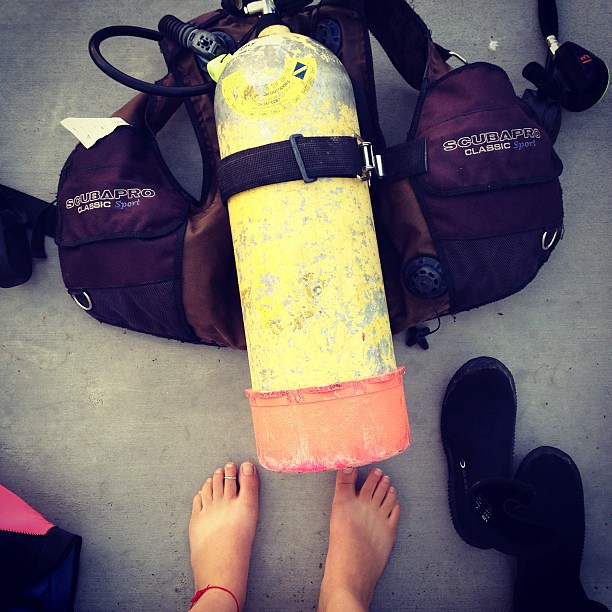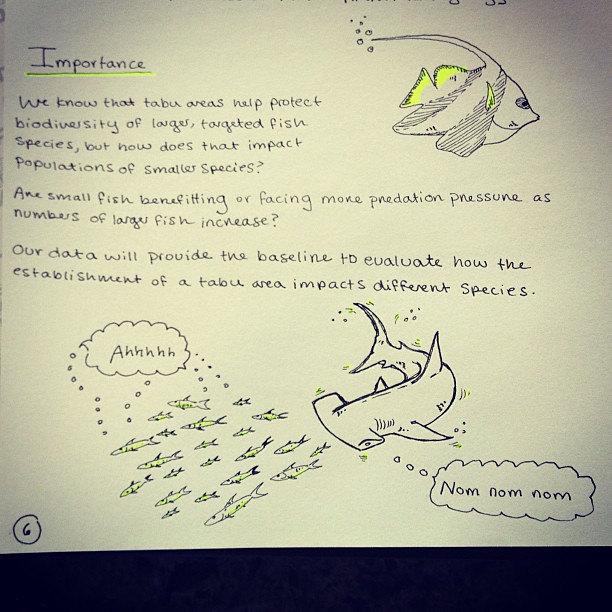
Alright. Saturday. Exhale.
Perched at a roadside cafe, I sip my afternoon coffee and watch as motorbikes weave through honking traffic. This is Suva, Fiji's bustling capitol city. Here, the air is thick and humid. The smell of coffee mingles with damp asphalt and gasoline. A bead of sweat slips down my neck and dampens my shirt, all beneath the bright gray sky.

Six of us have come here to survey marine biodiversity in a newly designated marine protected area (as outlined in my previous post). Our field site is half a day's journey away, on the northern island of Vanua Levu. We can't start collecting data until we have the government's go-ahead, so we're landlocked in Suva for the next few days dealing with the bureaucratic joys of research permitting.
To survey fishes in Fiji, it is necessary to obtain permits from the departments of education, immigration, and fisheries. It's near impossible to get these permits unless you're in-country. The Wildlife Conservation Society, one of our lab's major partners, has been a tremendous help in finagling all the legal bits. We should have all the prep finished by wednesday evening, when the next ferry to the northern island heads out.

Although I'm anxious to collect data, this dry time is necessary. In addition to obtaining permits, it gives us a chance to stock up on supplies (ethanol and dry ice to preserve tissue samples, buckets, nets, etc) and to participate in local outreach. Yesterday Dr. Drew (our primary investigator, AKA the head of this project), gave a presentation on reef preservation and community-based conservation at a local high school. We've also been invited to a 4th of July celebration at the US embassy to discuss our research with local and international representatives.

Yesterday, I went wandering along the seawall in Suva harbor. The bay is choked with huge freighters and international fishing vessels. Plastic bags, cans, and debris litter the shallows. Yet, even here, angelfish and seargent majors forage in the rubble. Yes, there are tremendous challenges ahead of us, but it isn't too late to protect these precious places!
The abiding overcast is breaking up, and a hint of blue sky peeks through. I down the last of my coffee, and wonder what tomorrow will bring.







